Invitation to ‘La Danse’
Frederick Wiseman’s new documentary, "La Danse: The Paris Opera Ballet,” is a celebration of the ephemeral nature of performance and the fleeting glory of the human body. Frederick Wiseman’s new documentary, “La Danse: The Paris Opera Ballet,” is a celebration of the ephemeral nature of performance and the fleeting glory of the human body.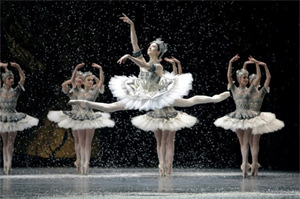
new documentary, “La Danse: The Paris Opera Ballet,” is a celebration of the ephemeral nature of performance and the fleeting glory of the human body. Dance, like theater — and human life — is an art form that, when complete, ceases to exist. But unlike theater, there are no words to cling to, no script to serve as a blueprint for thought or memory. Dance, as Brigitte Lefèvre, artistic director of the Paris Opera Ballet, says, should be “a gift to the public that they can feel without any explanation.”
The same could be said of Wiseman’s work. Wiseman, unlike many documentary filmmakers, never inserts himself into his films. He does not dictate what the audience should think or feel. His presence is felt only in the editing, the selection and placement of the segments we see. There are no narrative voiceovers, no talking heads, no identifying captions and, unless it is present in the scene being filmed, no music to manipulate the audience’s emotions.
In “La Danse” we are taken on an experiential and engrossing tour of the Paris Opera Ballet. There is no explanation or analysis beyond what we overhear from a choreographer or administrator. We enter the mirrored rehearsal studios of the Paris Opera House, the company offices where the balance between art and business is negotiated, and the costume shop where artisans sew beads onto tulle skirts. We visit the hair and makeup rooms, the cafeteria and a black-tie fundraising gala. We sit in on technical rehearsals — the transition between rehearsal and performance — in the red and gold cavern of the 2,200-seat auditorium, as lighting and video cues are checked. Dancers practice in sweat pants and tank tops in front of elaborate sets while stagehands cross the vast stage. And finally we are taken into the glorious performances, privileged witnesses to the scene onstage and off.
The “transmission of knowledge” from the old to the young — the “generational renewal” — provides the narrative undercurrent. Many of the coaches are older, stout and white-haired. They critique young dancers, lean and powerful as Arabian steeds, and offer insights into movements they will never again execute. The window of time in which a human being can perform these astonishing feats of athleticism and grace is tiny. This is the dichotomy at the heart of “La Danse.” An artistic tradition spanning centuries is passed on from one dancer to another. Years of training and months of grueling rehearsals culminate in a brief blaze of performance. And those who dance, we are reminded, are as ephemeral as dance itself.
A leading ballerina, her dark hair in a bun, meets with artistic director Lefèvre, who is dressed in black and has cropped auburn hair, dangling silver earrings and a long aristocratic upper lip. The dancer casually tries to lighten her arduous repertoire for the season, insisting that the workload is too much. She sidesteps her true fear, until Lefèvre finally says, “Something is bothering you.” The attractive, slender woman pauses.
“What I’m afraid of … is that I’m not 25 anymore.”
In another meeting, Lefèvre says, “I showed a picture of Gillot in McGregor’s ballet, where she is making these splits. Try to do that when you reach 45. There can be exceptions, but. … This brings us back to the definition of the dancer by Maurice Béjart: ‘Half nun, half boxer.’ … At a certain age, it’s over. We stop at 40. Some dancers in the company don’t reach 40.”
The Opera House, also known as the Palais Garnier, is itself a character in “La Danse.” It squats on the boulevard like a spectacular ornamented toad. Wiseman’s camera allows us to roam the Palais alone. We wander through the underground catacombs, the tall, narrow corridors, and into the grand lobby — almost claustrophobic in its sumptuousness, with its cascading staircases, elaborately branched candelabras and massive columns of veined marble. Wiseman takes us down to the fish swimming in the subterranean lake at the base of the Opera House. We go up to the roof overlooking Paris, where, among the stone masks of comedy and tragedy, bees swarm about a beekeeper as he harvests their honey. We peer down into the nautilus shell of a descending spiral staircase. History is palpable within these walls and accentuates the brevity of the human lives that animate it. Mortality infuses every frame. And yet, so too does the joy and wonder of the human body.
“A dancer,” says Lefèvre, “is both the racehorse and its jockey, the race car and its driver.” The “jockey” is the performer’s rational, overseeing mind that must remember the sequence of steps and where the edge of the stage is. The “racehorse” is the character that will transport the dancer, with a separate intelligence, intuitive impulses and a spontaneous emotional life. In performance the two creatures must merge.
Wiseman gives us a glimpse into this alchemical process of creating art. Angelin Preljocaj, the choreographer of “La Songe de Médée,” and the dancer playing Medea discuss in a sunlit studio the symbolism of the three final gestures in the ballet.
“This reminds you of the children, when everything went fine,” Preljocaj says, one arm sweeping to the side, his wrist twisting slowly. Then he brings his hands and forearms together, palms up, as though tilting a child backward. “This is when you played with them.” He unfurls a hand by his mouth and gently blows, as though blowing dust out of his palm. “And maybe this would be … destiny, tragedy, your life, what you have done.” He blows again.
You can’t fight it. Maybe you can use these ideas. What counts are the ideas you’ll have on the stage. … You’ll see, some things remain unexplainable. Cocteau had a sentence, not so nice to the artist, but ‘It’s up to the public to figure it out.’ Sometimes it’s unexplainable, it’s a state you can’t define. But once you’re on stage, with blood all over, a devastated face, you’ll see. … And the continuity of the ballet will help you. If you dance the first pas de deux with Wilfried as you did, what follows builds something in us and in you too. The character is layered from the beginning. The coherence is built step by step as the ballet develops.
The first shot of a performance, far into the film — a romantic pas de deux on an empty stage, flooded in blue light — is startling after the prosaic working environment of rehearsal. Rehearsal is the realm of the choreographers and coaches, a world of instruction and repetition. In performance the choreographers are powerless. The dancers become ascendant and we see their artistry in its fullness for the first time. The lights, the costumes, the sacred ritual space of the stage, but above all the transformation of the dancers into their roles, and their emotional intensity, immersion and focus generate the elevated state of performance.
And yet, as powerful as the performances are, it is particularly moving when Wiseman pans away from the stage to observe what is not meant to be watched. The lush orchestrations of Tchaikovsky’s “Nutcracker” or Berlioz’s “Roméo et Juliette” continue to be heard as we see other dancers waiting in the wings in full glittering costume, riveted on the performance, their legs casting long shadows in the light spilled from the stage. Stagehands in T-shirts and jeans stand in the shadows among ladders, cables and dim ropes of light. These moments have the unguarded intimacy of watching a lover sleep.
Near the end of the film we see the performance of “La Songe de Médée.” It is a savage, tormented piece, scored with eerie metallic dissonances. As the performance comes to a close, with the two children dead on stage and Medea smeared with blood, a scrim drops in front of the scene. Through the dark transparency Medea performs the three gestures we saw in the early rehearsal, ending with the unfurling hand and the gentle blowing of dust as the lights go out. It is a strange shock of recognition. We finally see the abstract movements in context. We understand them, without words, without explanation, at last. And then the dance, like life, vanishes.
“La Danse” will air as part of “THIRTEEN’S Great Performances” series on PBS stations nationwide on the evening of June 16 (check local listings). It is also playing/opening in theaters nationwide and in Canada. “La Danse” is produced and distributed by Zipporah Films: www.zipporah.com (158 minutes, in French with English subtitles).
(To see three excerpts from the film, click here and here and here. To read an interview with “La Danse” director Frederick Wiseman, click here.)
Eunice Wong is an actor based in New York City. Her website is www.eunicewong.com.
Your support matters…Independent journalism is under threat and overshadowed by heavily funded mainstream media.
You can help level the playing field. Become a member.
Your tax-deductible contribution keeps us digging beneath the headlines to give you thought-provoking, investigative reporting and analysis that unearths what's really happening- without compromise.
Give today to support our courageous, independent journalists.
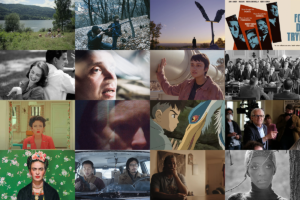
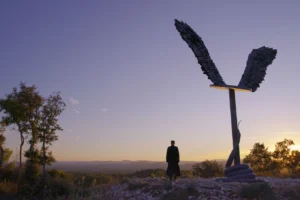
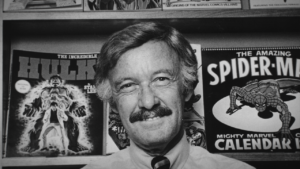
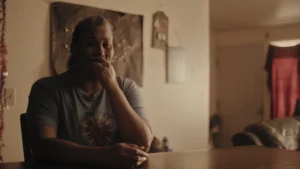
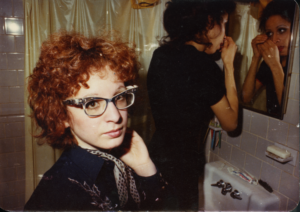
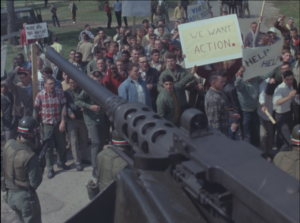
You need to be a supporter to comment.
There are currently no responses to this article.
Be the first to respond.